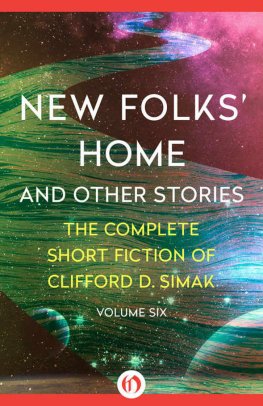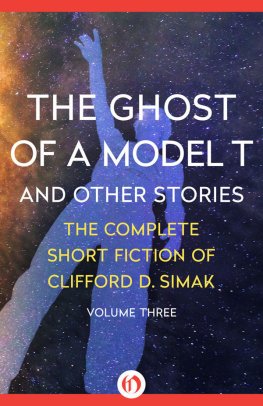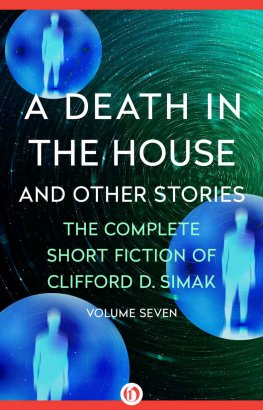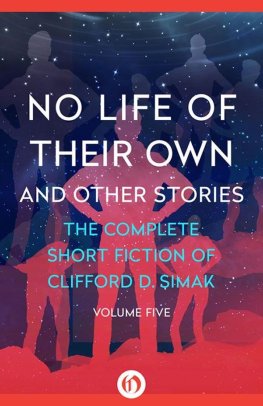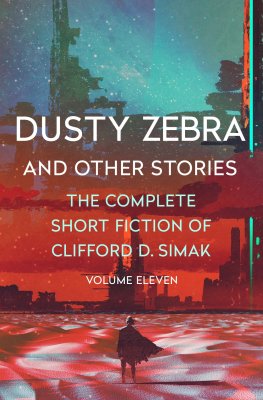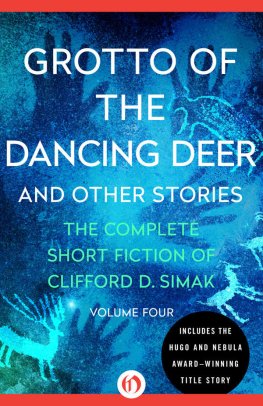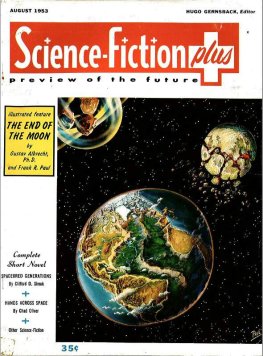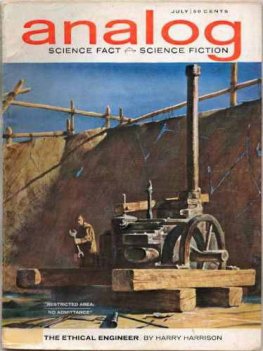New Folks Home
And Other Stories
The Complete Short Fiction of Clifford D. Simak, Volume Six
Introduction
The Names in Simak
The night was as black as a stack of cats.
Clifford D. Simak in A Death in the House
Those who have read more than the occasional piece of Clifford D. Simaks fictionand done so with some attentionmay have noticed two things about the names of his characters. One is that Cliff repeats names, or portions of names, and uses them over and over despite any relationship among them. Characters in several stories (including How-2 and Eternity Lost, for instance) are named Anson Lee, and he uses Anson as a first name in his novel Why Call Them Back from Heaven? I have found nothing in Cliffs past life to indicate that the name was based on someone he might have known. Nor is that true with regard to the name Horton, which appears in at least four of Cliffs novelssometimes as a first name, sometimes last (see Ring Around the Sun, Shakespeares Planet, Out of Their Minds, and The Werewolf Principle).
Not so with Parker. Again, Cliff sometimes uses it as a first name, sometimes last (as in Thomas Parker in The Whistling Well). But Parker was the maiden name of Cliffs maternal grandmother, a person who clearly had a special place in his life. (Her first name was Ellen, which Cliff named his only daughter and used in Over the River and Through the Woods: He clearly modeled the protagonist, Ellen Forbes, after his grandmother.) And the name Carson, which turns up frequently in the earlier Simak stories, is that of his brother.
Other character names seem to have been taken from place names familiar to Cliffin particular the name Grant, which was the name of the Wisconsin county in which he was born. (In what may have been a piece of whimsy, in one of his never-published stories Cliff had a character named Grant Sheridan.) And quite a number of his characters bore names clearly derived from towns in areas where Cliff had lived: Fennimore, Wisconsin, and Navarre, Minnesota.
The second thing about the character names used by Clifford Simak is that they are, almost uniformly, the sort that would be labeled white bread in todays parlance. That is, they are names commonly found in the midwestern United States: names such as Wallace, Webster, Carter, Blaine, Foster, Sutton
No great mystery here: When asked once, Cliff said it meant nothing; he was simply not interested in picking names that might have particular meanings; when writing a passage that called for a name, he simply reached out for whatever came into his head.
That same lack of intent apparently came into play when Cliff was creating titles for his stories: Many of the stories he sold had their names changed by editors, and in only a few of those cases did he bother to change it back for reprints (Skirmish was originally printed as Bathe Your Bearings in Blood, but Cliff reclaimed the original title in later appearances).
And that trait carried over when Cliff, as successful authors do, signed contracts for still-unwritten novels: Cemetery World was contracted for under the name Aesop and Pilgrim; A Choice of Gods under the name August 1, 2185; and Out of Their Minds as The Horse.
Two aspects of the names Cliff used will certainly be familiar to his readers. First, manythough not allof his robots bore biblical names: Nicodemus, Ezekiel, Gideon, Abraham. Second, many place names from his own past appear over and over again: Bridgeport, Woodman, Willow Bend, and above all, Millville, the little town that was closest to the Simak farm.
And yet, Clifford Simak was clearly capable of creativity in the field of names. For instance, in his novel The Goblin Reservation, when crafting names for solar systems, he came up with Headache No. 2, Misery IV, and the Slaughter Sunsand he used the Coonskin Systems several times. More often, when he needed to name a solar system in a story, he often simply chose names of stars familiar to the average reader: Polaris, Centaurus, Canopus, or Arcturus.
As Cliff said, the Millville of so many of his stories was really not the Millville of his youthjust as the hollows, ridges, and woods in his stories are deeper, higher, darker, and thicker than the real things. For Cliff, after all, was a user of his own imagination. And he used his imagination to transform what was familiar to him into something more wonderful. I have a mental picture of that farm boy walking through his so-familiar environment, playing a boys game of populating it with creatures out of his head. And he never stopped that game.
More than any of the other names Cliff Simak used in his stories, the one Im most curious about is Myrt, which I presume is a shortened form of Myrtle, a female name that was popular around 1900. When he tapped the name in his stories, he generally applied it to a person who did not even appear in the story but was referred to as being elsewheresuch as Aunt Myrt in Buckets of Diamondsbut he also bestowed it on the gigantic computer that was supposed to create the dreams in Worlds Without End.
Was there a Myrt, or an Aunt Myrt, somewhere in Cliff Simaks background?
David W. Wixon
In early 1963, Clifford Simak sent his agent a story named Failure, and I think this is that story. It was published in the July 1963 issue of Analog Science Fiction and Fact, part of that magazines short-lived experiment with the bedsheet format. Its a story about a man all alone, to whom somethingsomething elsereaches out, to give a kind of salvation.
It is a story told to beat back the sadness of thinking of all the lives that end in loneliness and despair.
dwwThe house was an absurdity. What is more, it was out of place. And it had no right to be there, Frederick Gray told himself. For this was his country, his and old Ben Lovells. They had discovered it almost forty years before and had come here ever since and in all that time there had been no one else.
He knelt in the canoe and stroked idly with the paddle to keep the craft in place, with the bright, brown autumn water flowing past, bearing on its surface little curls of foam from the waterfall a half a mile ahead. He had heard the faint thunder of the falls when he had parked the car and lowered the canoe from its top and for the past hour hed traveled toward it, listening to it and storing the sound of it away, as he was storing everything away, for this, he knew, was the last trip to this place he would ever make.
They could have waited, he told himself, with a strange mellow bitterness. They could have waited until he had made the trip. For it was all spoiled now. No longer could he ever think upon this stream without the house intruding. Not as he had known the stream for almost forty years, but now always with the house.
No one had ever lived here. No one would want to live here. No one ever came here. It had been his and Bens alone.
But the house stood there, upon the little knoll above the flowing stream, framed in all its shiny whiteness against the greenness of the pines, and with a path leading from his old camping place up to where it sat.
He wielded the paddle savagely and drove the canoe to the shore. It grounded on the gravel and he stepped out and hauled it up the beach, where it would be safe from the tugging current.
Then he straightened and stared up at the house.
How would he tell Ben, he wondered. Or should he try to tell him? Might it not be better, when he talked with Ben, to disregard the house? You could not tell a man, lying in a hospital from which he had small chance of ever going home, that someone had robbed him of a segment of his past. For when a man is near the end, thought Gray, his past is somehow precious. And that, Gray admitted to himself, was the reason he himself resented the house upon the knoll.

